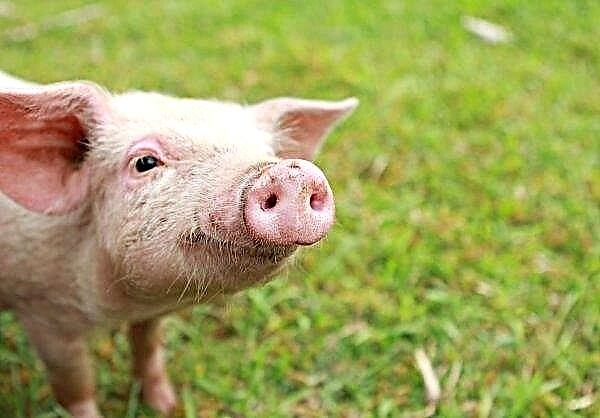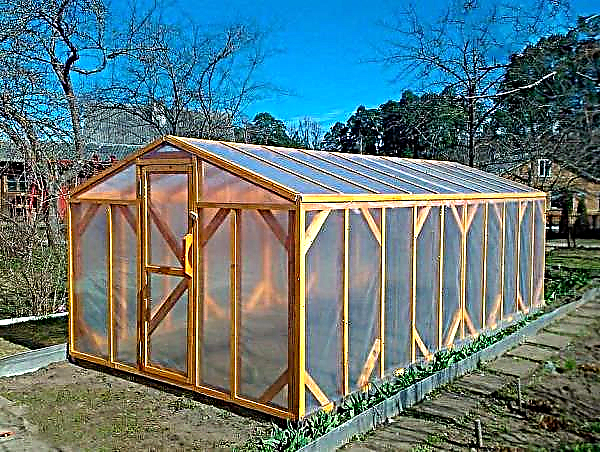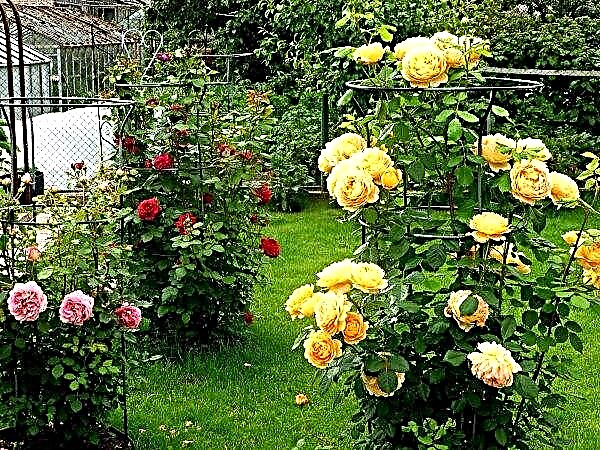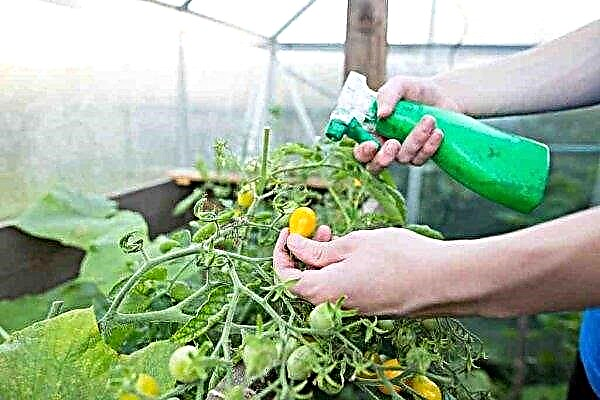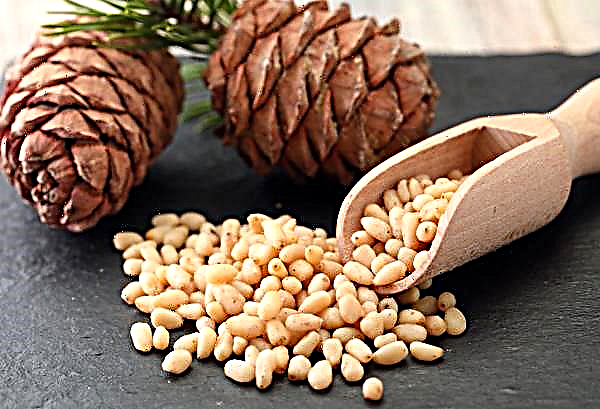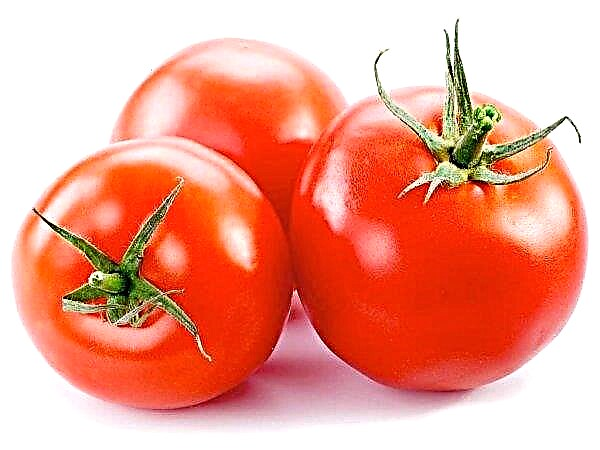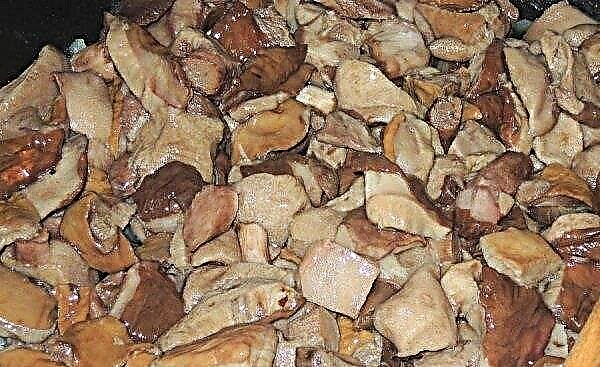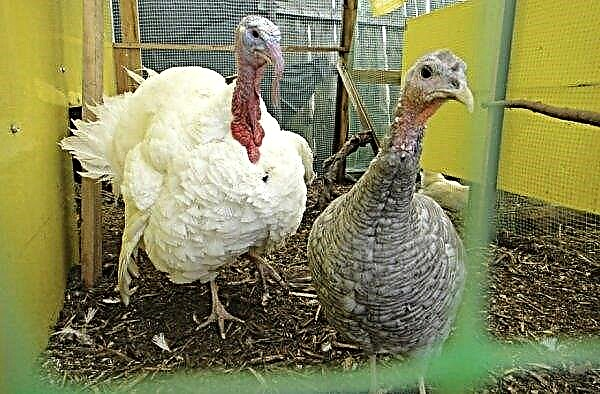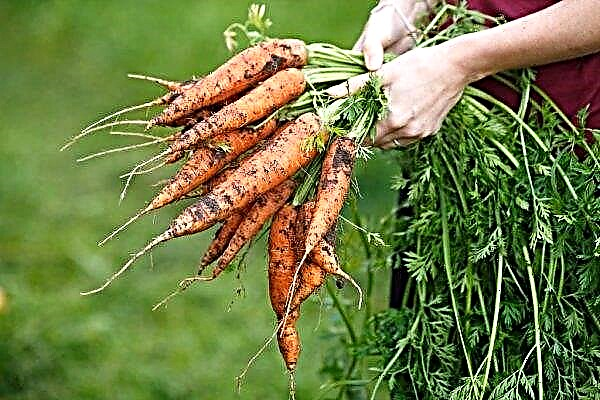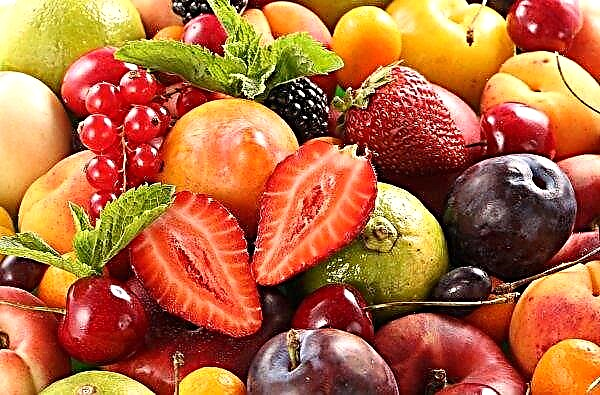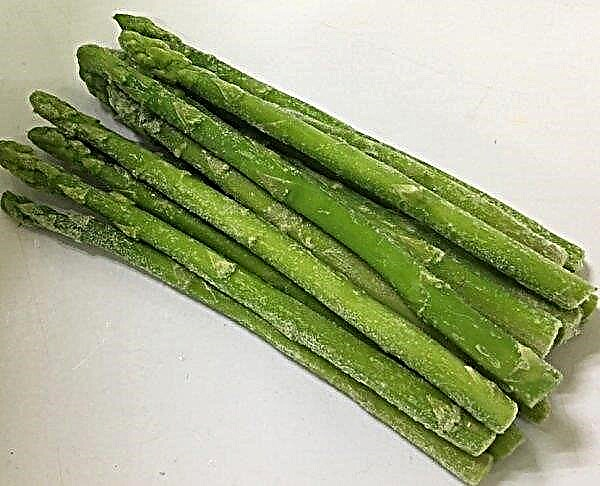Nothing, perhaps, revives a dull landscape in late autumn, like bright clusters of red mountain ash. It is not surprising that this tree is increasingly used in the landscape design of city parks and private household territories. About how you can use a decorative plant to decorate a garden or summer cottage, you will learn from the article.
Description of common mountain ash
Mountain ash is the generic name of a group of low deciduous trees, which includes more than two hundred varieties. However, the most famous and widespread species is the mountain ash, or, following scientific terminology, Sorbus aucuparia.

From the point of view of the botanical description of the plant, the following symptoms are characteristic:
| Tree height | 5-10 m (sometimes grows to 12 m) |
| Crown shape | Rounded, up to 5 m in diameter, light and openwork |
| Bark | Smooth and gray with a decorative sheen, the presence of a brown or yellow shade is possible. Young shoots are slightly reddish, with a slight pubescence. |
| Kidney | Heavily pubescent, felt |
| Sheet | Long, up to 20 cm. The arrangement is alternate, the structure is unpaired, complex. Each of 7–15 segments is a separate oval leaf with a pointed tip, serrated at the edges and in the upper part. Matte surface. The color of the leaves is green, in the front part it is brighter and smoother, from the back - pale, fleecy. In the autumn, the leaves become saturated yellow. |
| Inflorescence | Thyroid, dense and dense. Large, with a diameter of about 10 cm. It is located on shortened shoots along the edges. |
| Flowers | Small, no more than 1.5 cm in diameter. Consist of five petals in the form of wide triangles. The aroma is unpleasant. |
| Fetus | Polyspermous, not opening, with juicy pulp. The shape is spherical, up to 1 cm in diameter. The color is bright red or red-orange. |
| Seeds | Small, rounded |
| Root system | A fibrous type, well developed. In volume reaches 5 m. |
Varieties of mountain ash
In the wild, there are two varieties of mountain ash - Moravian, whose growth area is mainly Central Europe, and Nevezinskaya, distributed mostly in Eastern Europe.
Did you know? The word "aucuparia" in the name of the species has an interesting origin. It consists of two roots - “avis”, which translates as «bird», and "capere" — «attract". EThis is due to the fact that in ancient times, red berries were used as bait for catching birds.
In addition to the wild-growing form of Sorbus aucuparia, its other varieties are also used to decorate the landscape, including artificially bred ones.
Among the most interesting varieties of Nevezhinsky species it is worth paying attention to the following:
- "Scarlet big" - medium-tall tree with a pyramidal crown and large fruits of a slightly flattened shape. The plant is distinguished by high winter hardiness, early maturity, productivity and sweet and sour taste of berries.

- "Bead" - undersized variety (up to 3 m), the crown is round and not very dense. Berries of bright ruby color, taste very similar to cranberries. A distinctive feature is high lighting requirements.
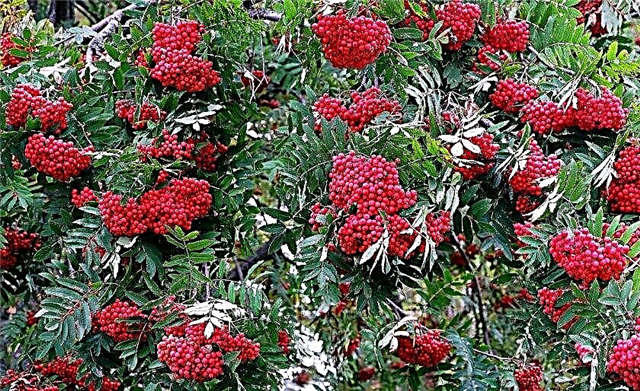
- Grenade - a hybrid of Sorbus aucuparia and common hawthorn. A low plant with very large, cherry-sized fruits. The taste of berries is tart, not bitter.
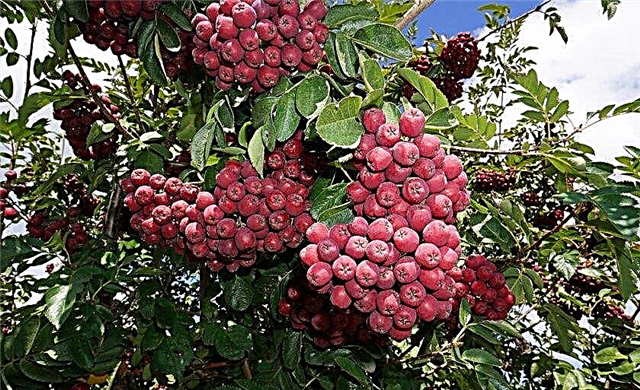
- "Beauty" - the result of crossing Sorbus aucuparia with a pear. Tall and spreading tree with high productivity. The berries are small, have an oval shape unusual for mountain ash.

- "Cubic" - a fruitful frost-resistant variety of Russian origin. The berries are large, with an unusual “faceted” shape.
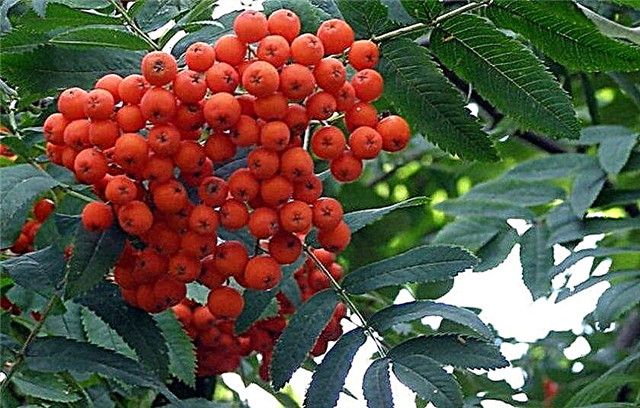
- Liqueur - a hybrid of Michurin selection. Obtained by crossing two types of mountain ash - ordinary and aronia. The tree is stunted, not higher than 2 m, the berries are dark, almost black.
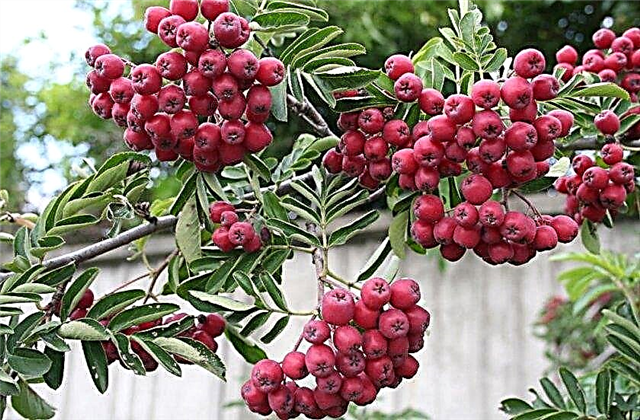
- "Hope" - low tree with large fruits. It is characterized by high early maturity and a rich chemical composition of berries.

- "Nevezhinskaya sugar" ("Sugar Petrova") - a tall tree with a powerful crown. It is characterized by unpretentiousness and strong immunity. The fruits are large and very sweet.

- "Ruby" - a dwarf variety not exceeding 2 m in height. The crown is sprawling, the fruits are large, dark red (ruby) in color with a pleasant sweet and sour taste.

- "Titanium" - the fruit of complex breeding work. Sorbus aucuparia, pear, and red-leafed apple trees were used for crossbreeding. The resulting hybrid is distinguished by dark fruit flowers with a spectacular bluish coating and large size.
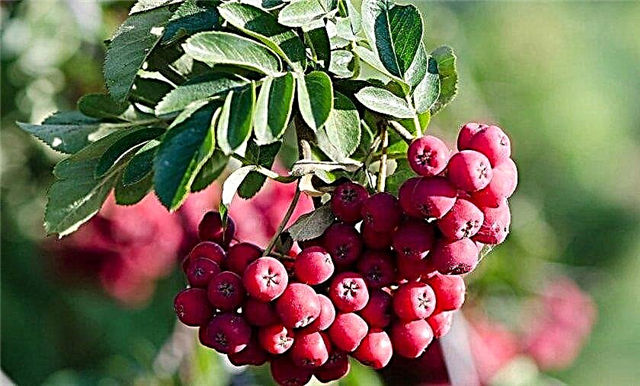
The Moravian variety in our latitudes takes root worse, therefore its use in landscape design is not so popular.
Did you know? The fruits of the Nevezyn mountain ash are used for the production of wine and tinctures, but in the name of the drink, either for marketing purposes or for simplified pronunciation, one syllable was deleted, as a result of which the alcohol product became "Nezhinsky".
However, as examples of tree varieties, mention may be made of:
- Apricot Lady - variety bred in the UK. A distinctive feature is the bright color of the leaves in the autumn period and the yellow-orange color of the fruits.
- "Asplenifolia" - A very old Bohemian variety with decorative leaves and red fruits rich in vitamin C.
- "Dirkenii" - Dutch mountain ash with an unusual color of leaves (at first they have a golden color and only become green as they grow older).
- "Fastigiata" - Another variety from the Netherlands. A distinctive feature is a straight crown, extremely thick and dense, as well as very shiny leaves. The fruits have a beautiful coral color, especially spectacular in combination with dark leaves.
- "Fifiana" (also known as “Xanthocarpa”) is a short tree with yellow or orange inedible fruits.
- "Joseph Rock" - The variety was imported from China. Tall tree with rich amber fruits.
- "Pendula" - one of the few varieties with a weeping crown shape (achieved by vaccinating the hybrid on a high stem). There is also another variety of Moravian mountain ash called Pendula Variegata.
- "Nana" - a very unusual variety, which is not a tree, but a shrub.
- Rossica Major - the variety was introduced to Europe from Russia, and therefore got its name. The main difference from the mountain ash is the bright red color of the petioles.
- Sheerwater Seedling - the tree is bred in Britain, very high, the branches are directed upwards, the fruits are small.
Use in landscape design
In landscape design, red-fruited mountain ash is used in various compositional roles. A tree can be planted as a tapeworm or be part of a carefully thought-out group, and in both cases it looks very advantageous.
Tapeworm
Sorbus aucuparia can be planted away from other trees or shrubs, thereby emphasizing the intrinsic beauty and self-sufficiency of the plant. A great option would be to place a bench under the mountain ash - in this case, the tree will create both a shadow and a romantic mood.
Weeping forms of mountain ash are also suitable for creating an atmosphere of solitude and peace. With their help, you can picturesquely decorate the arched entrance to the arbor, wicket and other elements of outbuildings.
 An additional argument for planting mountain ash in the role of a tapeworm is that this tree is considered very sun-loving. In shading, it loses its decorativeness and noticeably loses to relatives, planted in a better place.
An additional argument for planting mountain ash in the role of a tapeworm is that this tree is considered very sun-loving. In shading, it loses its decorativeness and noticeably loses to relatives, planted in a better place.
Group landings
The variety of varieties of mountain ash allows landscape designers to make up bright and unique groups, including exclusively representatives of this type of tree. Weeping and erect, tall and low, tree-like and shrubby, dense and sprawling, with red, yellow, orange or dark cherry fruits of all shapes and sizes, - all these characteristics of the creations of many years of breeding work, created on the basis of Sorbus aucuparia, make the plant a godsend for professionals in the field of landscape design and novice gardeners.
Important! One of the most striking and unusual forms of using ordinary mountain ash for decorating the garden is the grafting on one trunk of several varieties that differ from each other in color and size of the fruit. Such stock can be ordered already vaccinated in a special nursery.
With other perennials, mountain ash can also be successfully combined. The tree looks good both in the foreground and in the back or middle plan of various group compositions, but when compiling them it is important to take into account such a factor as compatibility.

What does red mountain ash combine with?
Mountain ash is a plant with a very high winter hardiness, so it is convenient to combine it with conifers of the northern species - spruce, cedar, pine, fir, arborvitae or juniper. In autumn, when the branches of mountain ash have large clusters, such groups in the saturated colors of green, yellow and red look incredibly impressive and contrasting.
Good mountain ash can be combined with shorter perennials or decorative herbaceous plants, because in this case the risk of not getting the necessary sunlight from the tree is prevented.
Among the proven and most successful in the combination of neighbors of the mountain ash ordinary, landscape designers call:
- poplar, especially black;
- ash;
- willow
- barberry;
- viburnum;
- honeysuckle;
- spirea.

Features of growing a tree
Unlike most fruit trees that need to be planted at a young age (usually not older than 3 years), rowanberry also allows a later transplant. For this reason, a young tree can be acquired in three forms - an ordinary seedling, a small tree on a stock (the splicing process must be completely completed) and the so-called coarse.
Important! Large-sized rowan seedling is an adult tree, whose age can reach 8 years. Thanks to the developed root system and the formed immunity, such a plant easily survives even in very adverse climatic conditions.
Rowan should be planted in early spring or late autumn. The minimum permissible distance between the seedling and other tall perennials should be 5 m. It is better to choose an open and well-lit place.
The plant is not demanding on the soil, although the ideal option is fertile loam, not too light for moisture to remain in the ground for as long as possible. An adult tree practically does not need care, therefore, attention should be paid to a seedling only during the first few years.
Video: Rowan planting instructions
Agrotechnical events include:
- watering - 3-4 times per season, depending on weather conditions (the cooler the summer, the less often the plant is watered);
- soil loosening and weed removal;
- top dressing - in spring, nitrogen fertilizers are used, in the summer the emphasis should be on the potash and phosphorus component, and in the fall, under digging, organic matter is introduced;
- cleaning the trunk circle from plant debris in the offseason and monitoring the integrity of the bark - these measures are necessary as the prevention of diseases and damage by pests (it is not necessary to process the tree with pesticides for this purpose).
To maintain the decorative qualities of mountain ash the tree must also undergo thinning, sanitary, and rejuvenating pruning as it ages.
Important! Mowing rowan every year, like most other fruit trees, is not necessary. It is enough to carry out this procedure once every 3-5 years, which is another plus in caring for the plant.
Advantages and disadvantages of mountain ash for landscape design
- Planting of mountain ash on a personal plot has a number of undeniable advantages, which, in particular, include:
- decorativeness, especially in autumn, when the territory is exposed, looks gray and dull;
- unpretentiousness, lack of need for constant care;
- frost resistance (there is no need to shelter a tree for the winter);
- compact sizes;
- healthy and tasty berries that can be used to prepare various preparations, home-made alcoholic drinks, as well as medicinal raw materials.
But there is a mountain ash and one drawback that may not appeal to all homeowners. Sorbus aucuparia berries are a favorite delicacy of birds, while birds, tearing clusters and pecking them directly on the site, scatter seeds everywhere in abundance. As a result, in the most unexpected places there are numerous shoots, which have to actively fight.

However, experienced summer residents note that there are even more problems with a birch in this regard, so mountain ash is not a bad option. Moreover, attracting birds to his plot, the gardener receives in their person a free “labor force” in the fight against harmful insects that winter in the bark of trees or in the soil, and in the spring become a real disaster.
When choosing a plant for growing on their site, many landowners have to make a difficult choice between decorativeness and functionality. Rowan red is a rare exception, perfectly combining both characteristics. Spectacular and bright appearance, unpretentiousness, high frost resistance, as well as tasty and healthy berries, which can be used for different purposes on the farm, are weighty arguments for planting a unique plant in your country house.











